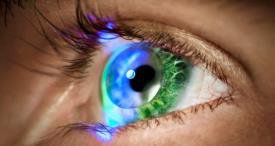AR & VR Smartglasses and Functional Contact Lenses Market Discussed in Topical IDTechEx Research Study Published at MarketPublishers.com
03 Feb 2016 • by Natalie Aster

LONDON – LCD, LED, and OLED microdisplay technologies are set to compete for integration into smartglasses – AR and also VR ones – a market that is poised to see noticeable growth with VR products taking the lead. VR headset shipments are projected to surpass the 10,000,000 units mark by end-2019.
If the buzz at the Consumer Electronics Show (CES) is any sign of things to come, 2016 will likely be the year of augmented reality (AR) and, what is more, of virtual reality (VR). Long awaited VR headset launches, increasing enabling technologies investment globally, and developments of optimised components made VR the words in everyone’s mouth at the 2016 CES held in Las Vegas.
The amount of visibility the smart glasses and contact lenses domain is witnessing is encouraging developers of a slew of allied technologies to fast-track and/or focus their efforts, as well as create components and devices intended specifically for serving this emerging industry.
Microdisplays, originally designed for large-screen projectors, were put to perfect use in head-mounted displays (HMDs). Along with its launch in 2013, Google Glass (GG) integrated a near-eye, reflective liquid-crystal-on-silicon (LCoS) display based upon Himax Display’s LCoS chip. Non-emissive systems like the LCoS require an external source of light with light constantly incident on any pixel, regardless of whether the above-noted pixel is off or on, which is an unwished trait for any portable application where battery life is vitally important. At the same time, emissive types, like micro-OLED displays, can be more energy saving; besides, they provide faster response time and a higher contrast. However, they are presently limited in brightness.
In the short to medium term, the 2 key more mature competing technologies OLED and LCoS microdisplays. Other than the liquid-crystal displays (LCD) already in products, eMagin Corporation has recently signed a non-exclusive IP licensing agreement to supply its unique OLED microdisplay technology to an undisclosed company, with an upfront licensing fee of USD 1 million; meantime, other headset developers are testing the performance of OLED displays in their devices.
Topical market research study “AR & VR Smartglasses and Functional Contact Lenses 2016-2026” elaborated by IDTechEx is devoted to canvassing how the global market for smart glasses and contact lenses is likely to evolve in the next 10 years. It discusses how various entities are addressing different technology related challenges, provides a detailed comparison and benchmarking of the various microdisplay technologies, profiles the top players in the domain, as well as offers granular market forecasts for smartglasses and smart contact lenses.
Report Details:
AR & VR Smartglasses and Functional Contact Lenses 2016-2026
Published: December, 2015
Pages: 130
Price: US$ 5,475.00
More studies by the publisher can be found at IDTechEx page.
CONTACTS
The Market Publishers, Ltd.
Natalie Aster
Tel: +357 96 030922
Fax: +44 207 900 3970
[email protected]
MarketPublishers.com
Analytics & News
